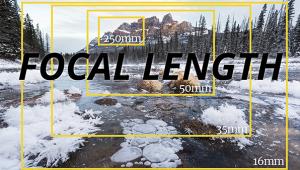Angle Of View; Flight Plans; Up In The Air With Cameron Davidson
The thing you’ve got to watch out for is the pilot who gets a little too into the photography.
 |
|
|
It’s not a common occurrence, to be sure, but…“I had a pilot who almost killed me,” says Cameron Davidson, who spends a good portion of his time in the air shooting for clients and his own projects. “I have this strict rule: never hover a helicopter; always keep forward movement. Well, this guy got all concerned about the photographs and was pointing out the great sunset to me when we got hit with a gust of wind and he lost tail rotor effectiveness and we spun and dropped—and we were only 300 feet off the deck.” Fortunately, the pilot recovered control.
Cameron’s punch line to this true story is pure pro shooter: “And it wasn’t even a necessary shot.”
 |
|
|
Should you ever have the opportunity to photograph from a helicopter or a fixed-wing aircraft, keep the moral of the story in mind: the pilot is the key element in your effort—primarily for safety, secondarily for photography. “Make sure the person you’re working with has a lot of time in that particular type of ship,” Cameron says. “The last thing you want is an instructor who says, ‘I’ve got 500 hours,’ but 400 of them are teaching other people, which isn’t the same as 500 hours flying for aerial photography.”
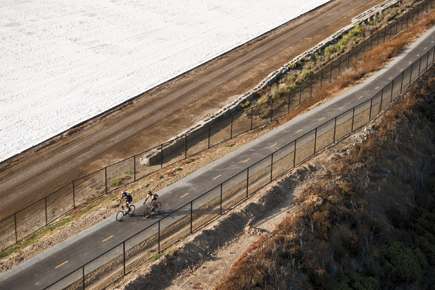 |
|
|
After experience comes specific know-how and communication. It’s not “turn right,” it’s “bank right” when Cameron directs the helicopter pilot toward the shot he wants. “And it’s the degree of bank that I want—‘Give me a little pedal turn here,’ or ‘less pedal.’ I often sit in the back seat behind the pilot, and I have the door off. He’s seeing what I’m seeing—we’re both on the left or right, depending on the helicopter.” Although he has photographed from fixed-wing craft, all the photos here were taken from helicopters.
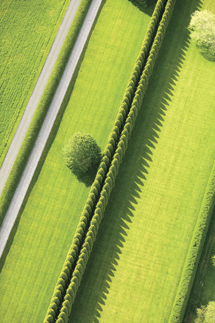 |
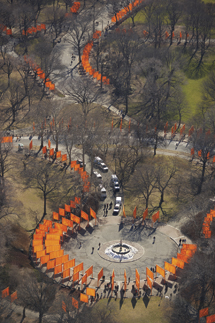 |
|
|
||
If you get a chance to shoot from above, take advantage of the opportunity by using the most sophisticated, capable gear you can possibly get your hands on. This is not point-and-shoot territory. Over the years Cameron has shot with top-of-the-line Leica, Canon, and Nikon gear. Although he will shoot handheld (as he did on recent flights over Port-au-Prince to document the aftermath of the earthquake), for his clients’ needs and his book projects he has over the years affixed his cameras to a number of Kenyon gyro stabilizers, including the KS-4 and the KS-6. He currently uses a custom-made rig comprised of two KS-6s—“it’s rock steady, a fantastic rig.” His lens choice favors the slightly wide to moderate tele focal lengths that work well with his preference for shooting from 500 feet or less. A final preference: a polarizing filter for each lens.
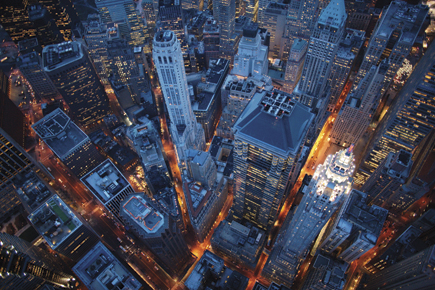 |
|
|
The rest is response time and pattern recognition, as the aerial view provides an endless and often rapid interplay of light, shadow, lines, and colors. But with so much to choose from, there’s the definite need for some natural selection—which is
where Cameron’s skill as a pilot of fixed-wing aircraft comes into play. “When I fly a plane, I’m always looking for a place to land, just in case, so I’m used to looking around constantly, keeping my eyes moving, and I do that when I photograph. I’ll catch something out of the corner of my eye, see a pattern start to come together, a pattern that tells a story—that’s the key. Sometimes it’s really quick—we’re flying over and I just respond and bang, shoot two or three frames and that’s it.”
Cameron doesn’t fly and shoot at the same time. “I’d get tunnel vision,” he says, obviously mindful of his own admonition about the pilot who’s too interested in the photography.
 |
|
|
Cameron’s book, Chesapeake, which is scheduled for midyear publication, is the culmination of 20 years of aerial photography of the Chesapeake Bay area. He’s still shooting for a book of aerials of New York City, with publication tentatively scheduled for next year. You can see more of his photos right now at two websites, www.camerondavidson.com and aerialstock.com.
- Log in or register to post comments















































